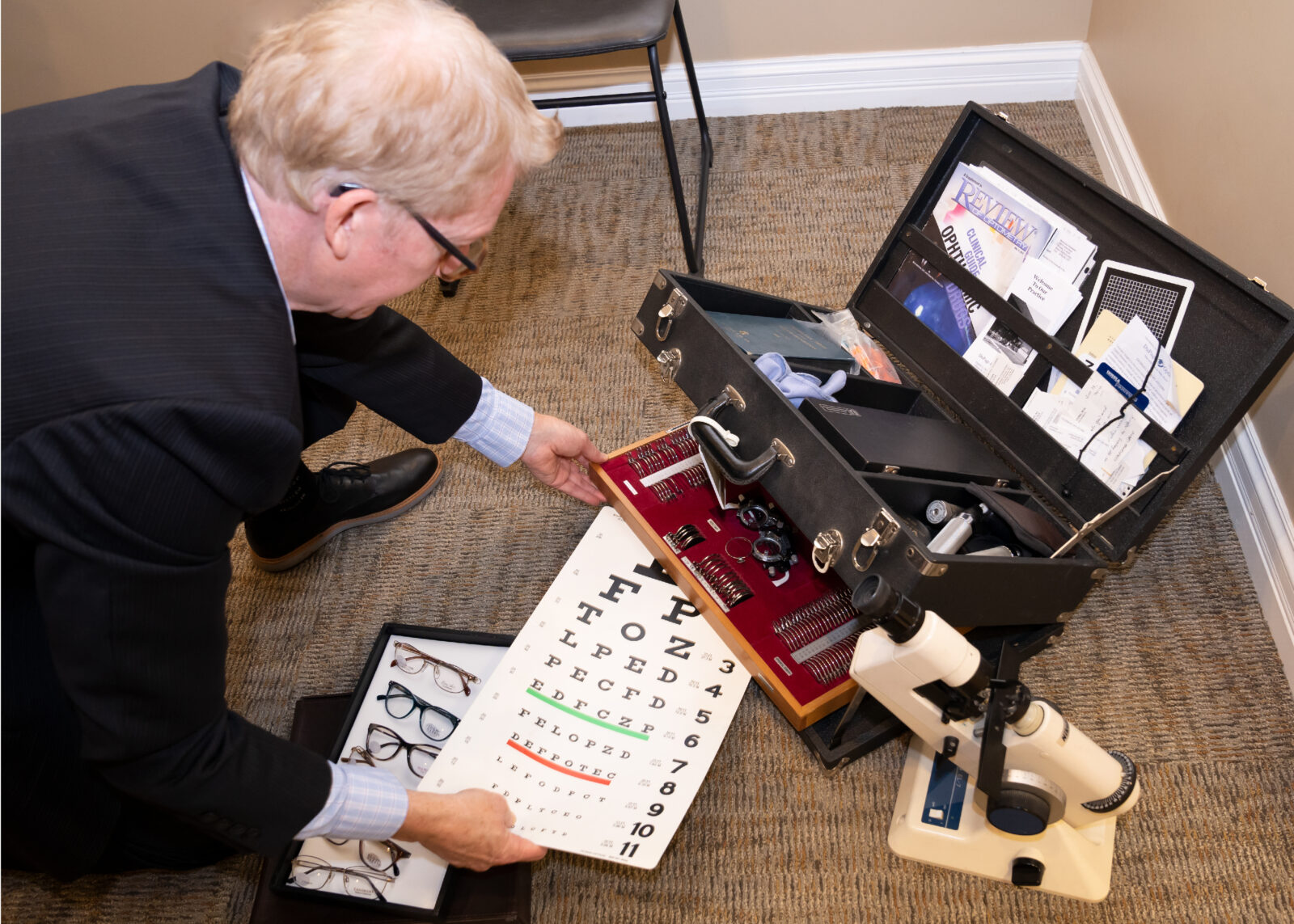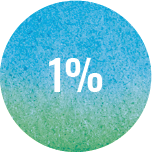Things aren’t all that close in North Dakota. The closest neighbor can be too far to walk. Often the trip to the nearest city is measured in hours. And sometimes the closest services—like eye care—can be hundreds of miles away. Even some of the town names hint at the remoteness. Enderlin, for example, is derived from the Germanic “End der Line” because it represented the last stop of the railroad.
But other things are very close in North Dakota—things like family and friends and relationships. Perhaps it’s because things are so spread out there or because the people need to be warmer to compensate for the climate. Whatever the reason, Dr. Steve Butzon grew up in that environment and the practice he’s built has been influenced both by that remoteness and that closeness.

“I rode with him on occasion to observe—and also just to spend time with him—as he'd go up to the farms and examine his patients. Seeing my father try to meet their needs, regardless of where they might be located, influenced me quite a bit.”
Seeing Dad make an impact
One of seven children, Steve grew up with a French-born artist mother and an optometrist and part-time rancher father. Like many boys of the area, Steve worked on local farms and earned some money and some scars from uncooperative barbed wire fences.
Steve sometimes swept the floors in his father’s practice but never really got involved like his sisters did. Steve’s most vivid memories came while accompanying his father on house calls. If this were a movie, at this point the screen would get all wavy and there would be a flashback to a simpler time, when doctors of all kinds brought their services to people in their homes. Rod Butzon’s practice was small, but the need in rural North Dakota was great, so he was often on the road visiting his patients in their homes—sometimes with a little helper tagging along.
“I rode with him on occasion to observe—and also just to spend time with him—as he'd go up to the farms and examine his patients. Seeing my father try to meet their needs, regardless of where they might be located, influenced me quite a bit.”
When it came time for a teenaged Steve to choose a career path, optometry wasn’t the obvious or only choice. He considered becoming a teacher or a lawyer, and while his father never encouraged Steve to go into optometry, the example he set did.
Looking forward. And back.
Ultimately, a desire to work in healthcare drew Steve to the University of North Dakota and the changing face of optometry appealed to his desire to be entrepreneurial in a way his father never could. He moved on to the Illinois College of Optometry and met Caroline, his future wife and business partner.
“We acquired our first practice in 1991. I put a request out to people in the industry to see if there were any available practices. So, it just happened that someone called and said, ‘This optometrist just passed away and his family wants to sell the practice.’ I was looking across the nation and am glad it happened to be in the Chicago area. And so we acquired DuPage Optical and stayed here.”
He began to look forward to building a practice that combined a number of sub-specialties—to help the practice thrive and to keep things professionally challenging. Those sub-specialties came to include advanced expertise in binocular vision, treatment of dry eye, orthokeratology, and occupational vision services, with clients that included some of the most cutting-edge thinkers in the country at Argonne National Laboratory.
But while those helped to create a very forward-thinking practice, another specialty of sorts came directly from the past.
House calls.
It’s tempting to think of doctor house calls as a vestige of rural America in the 1960s. But Dr. Butzon found that there was a tremendous demand in the areas around Chicago. He coordinated with home health agencies and, in a van with his gear, began to visit patients who couldn’t easily get out of the house.
In an era before cell phones, it wasn’t always easy. “Prior to GPS, I would talk to the caregivers and sometimes they would say, ‘I just came here through an agency,’ and they didn't know where they were. I'd go to a gas station, but they often had people who didn’t really know the area. So, I just had to improvise. I had to do what was necessary, and I would. I didn't give up. I wouldn't say, ‘I'm not going to see you because I couldn't find you.’ I would do whatever it took.”
The impact for his patients was—and continues to be after 5,000 home visits—profound. Homebound people with a variety of conditions are able to receive eye exams and diagnoses, and get medications and referrals to surgeons who Dr. Butzon makes sure will allow him to follow up in the patients’ homes. If the surgeon doesn’t agree, they don’t get the referral.
It assures that, even though they were separated by distance, the relationship between patient and OD is extraordinarily familiar. And mutually rewarding. “Personally, it satisfies my own desire to always want to help the best I can for anyone…to go beyond what would normally be asked in certain cases. It gives me personal gratification and good feelings. But I also simply enjoy the conversations because I enjoy learning about them.”

Dreaming, and doing it
When people walk into DuPage Optical, they are greeted by a list of services that includes occupational vision services, treatment of eye disease…and “House Calls” right at the top.
“I think home visits are having a little bit of a resurgence. Dr. Thomas Cornwell, Senior Medical Director at Village Medical At Home, has been an advocate for hospitals and agencies to start going back and providing home visits. I connected with him about 20 years ago and he's considered one of the leaders in home healthcare. Together we’ve been talking to legislators and trying to make people more aware because it certainly is a need that should be more supported. I think doctors should be open to considering home visits because more of our aging patients are choosing to stay in their homes. If they're able to, eye care is as necessary as any other part of their well-being.”
Dr. Butzon served as IDOC Member Director in the Chicago area and found the collaboration and services beneficial in achieving his dream of building a thriving multi-disciplinary practice—with home visits one of the unique services that more fellow members are considering. “IDOC brings us together with like-minded doctors from around the country. We’re able to exchange ideas, learn from each other, and inspire each other to greater things.”
In a way,his relationship with other IDOC members mirrors the one he has built with many of his grateful patients. Remote. But close.








